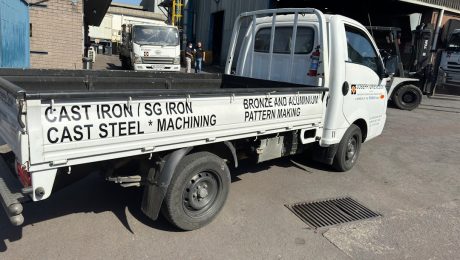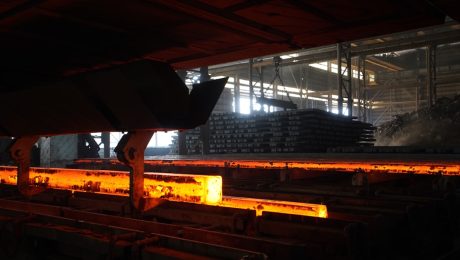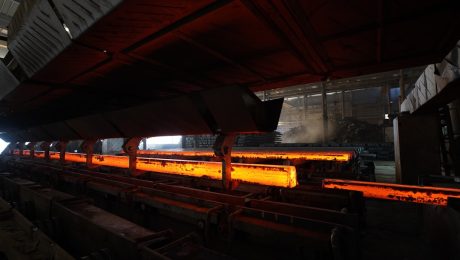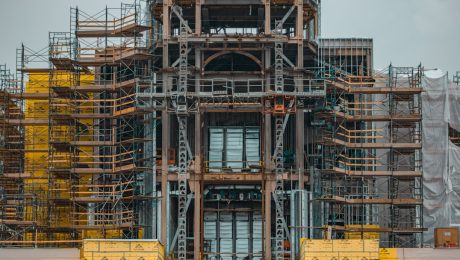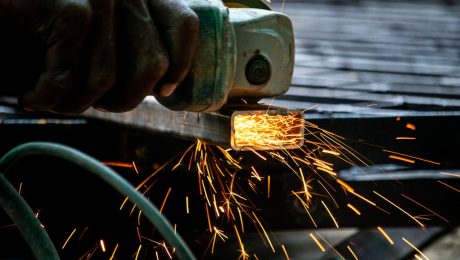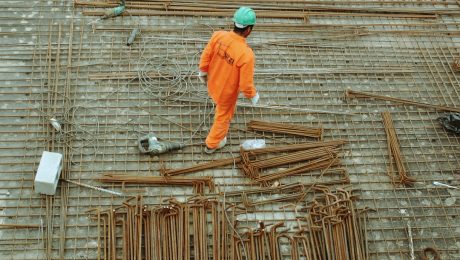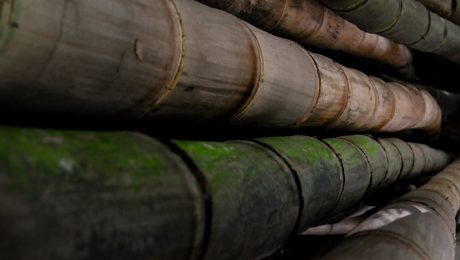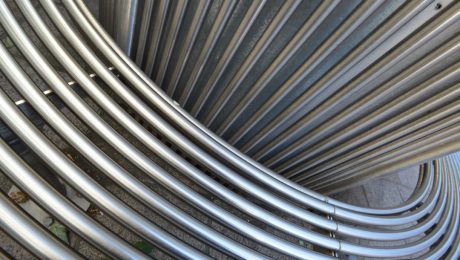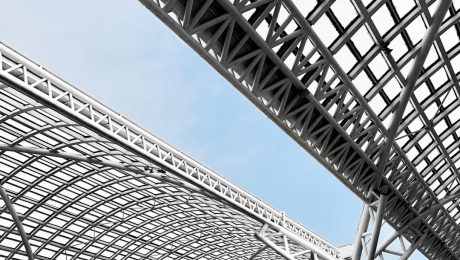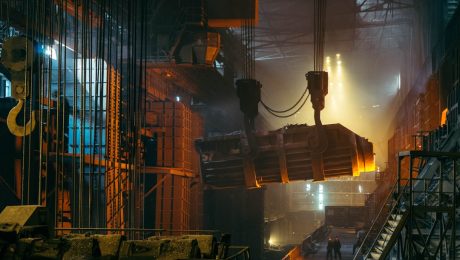In the competitive landscape of B2B steel sales, a one-size-fits-all approach is a recipe for disaster. To achieve sustainable growth and maximize profitability, you need a laser-focused strategy. That strategy begins with effective customer segmentation. This post will explore the crucial aspects of segmenting your B2B steel customers, empowering you to tailor your marketing and sales efforts for optimal results.
1. Identifying Key Customer Characteristics in the Steel Industry
Before you can segment your customers, you need to understand the key characteristics that define them. In the B2B steel sector, these characteristics can be surprisingly diverse. Consider factors like:
- Industry Vertical: Are your customers in construction, automotive, manufacturing, energy, or another sector? Each industry has unique steel requirements and purchasing behaviors.
- Company Size and Revenue: Small businesses will have different needs and purchasing power than large corporations. Segmenting based on size allows for targeted pricing and communication strategies.
- Steel Grade and Volume Purchased: Do your customers primarily purchase high-strength steel, stainless steel, or other grades? The volume they purchase significantly impacts their needs and your relationship management.
- Geographic Location: Proximity impacts logistics and delivery costs. Segmenting geographically can optimize your supply chain and delivery schedules.
- Purchasing Process and Decision-Making: Understanding the complexity of the purchasing process (number of stakeholders involved, decision-making timelines) is crucial for tailoring your sales approach.
- Technological Adoption: Some customers may be early adopters of new technologies, while others are more traditional. This influences your communication methods and product offerings.
2. Developing Effective Segmentation Strategies for B2B Steel
Once you’ve identified key characteristics, you need to develop a segmentation strategy. Several approaches are effective:
- Demographic Segmentation: This focuses on readily available data like company size, location, and industry. It’s a good starting point but should be complemented by other methods.
- Behavioral Segmentation: This considers how customers interact with your business. Do they consistently purchase large volumes? Are they price-sensitive? Do they require specialized services?
- Psychographic Segmentation: This delves into the values, attitudes, and beliefs of your customers. While more challenging to quantify, understanding their priorities can significantly impact your marketing messaging.
- Needs-Based Segmentation: This focuses on the specific needs and challenges your customers face. For example, some may prioritize speed of delivery, while others emphasize product quality or technical support.
A combination of these strategies often yields the most effective segmentation. For instance, you might segment your customers by industry (demographic) and purchasing volume (behavioral), creating segments like “High-Volume Automotive Manufacturers” and “Small-Scale Construction Businesses.”
3. Analyzing Customer Data to Refine Segmentation
Effective segmentation relies on robust data analysis. Utilize your CRM (Customer Relationship Management) system, sales data, and market research to gain a deeper understanding of your customers. Tools like data analytics platforms can help you identify patterns and trends within your customer base. Key metrics to consider include:
- Customer Lifetime Value (CLTV): Identify your most valuable customers and tailor your strategies to retain them.
- Average Order Value (AOV): Understand the typical purchase size for different customer segments.
- Customer Churn Rate: Identify segments with high churn rates and investigate the underlying causes.
- Purchase Frequency: Determine how often different segments make purchases.
By analyzing these metrics, you can refine your segmentation strategy and ensure you’re focusing your efforts on the most profitable and loyal customers.
4. Tailoring Marketing and Sales Strategies to Each Segment
Once you’ve segmented your customers, you can tailor your marketing and sales strategies to each segment’s unique needs and preferences. This might involve:
- Targeted Marketing Campaigns: Develop personalized messaging and offers for each segment. For example, you might offer volume discounts to high-volume customers or emphasize speed of delivery to time-sensitive customers.
- Customized Sales Approaches: Adapt your sales process to match the purchasing behavior and decision-making process of each segment. This might involve different communication channels, sales materials, or levels of technical support.
- Differentiated Pricing Strategies: Offer tiered pricing plans based on volume, contract length, or other relevant factors.
- Specialized Customer Service: Provide tailored support and resources to each segment, addressing their specific needs and challenges.
5. Measuring the Success of Your Segmentation Strategy
Regularly monitor the effectiveness of your segmentation strategy. Track key metrics such as:
- Revenue Growth within each segment: Are your efforts generating increased sales?
- Customer Acquisition Cost (CAC): Is your segmentation strategy reducing the cost of acquiring new customers?
- Customer Retention Rate: Are you retaining more customers within each segment?
- Customer Satisfaction Scores (CSAT): Are your customers satisfied with the tailored service they receive?
Use this data to refine your segmentation strategy over time, ensuring it remains aligned with your business objectives and the evolving needs of your customers. Continuous monitoring and adaptation are essential for long-term success.
By implementing a robust customer segmentation strategy, you can transform your B2B steel business. Focusing your resources on the right customers, with the right message, at the right time, will pave the way for significant growth and profitability.
SEO Tags: B2B steel marketing, steel customer segmentation, B2B steel sales, steel industry marketing, industrial customer segmentation
body {
font-family: sans-serif;
line-height: 1.6;
}
h1, h2, h3 {
color: #333;
}
The steel industry is a cornerstone of global infrastructure and manufacturing. To thrive in this competitive landscape, demonstrating commitment to quality, safety, and environmental responsibility is paramount. This is where steel industry certifications come in. This comprehensive guide will navigate you through the world of steel certifications, explaining their importance, types, and how to obtain them.
Understanding the Importance of Steel Industry Certifications
Steel industry certifications aren’t just pieces of paper; they are powerful tools that unlock numerous benefits for businesses. They provide independent verification of your company’s adherence to stringent quality, safety, and environmental standards. This builds trust with clients, strengthens your brand reputation, and opens doors to new opportunities. Certified businesses often enjoy increased competitiveness, improved operational efficiency, and reduced risks. Moreover, certifications can demonstrate a commitment to sustainability, which is increasingly important to environmentally conscious clients and investors.
Specific benefits include:
- Enhanced Customer Confidence: Certifications reassure clients about the quality and reliability of your products and services.
- Increased Market Access: Some projects and contracts require specific certifications as a prerequisite.
- Improved Operational Efficiency: Implementing certified systems often leads to streamlined processes and reduced waste.
- Reduced Risks: Certifications demonstrate a proactive approach to risk management, minimizing potential liabilities.
- Competitive Advantage: In a crowded market, certifications can differentiate your business from competitors.
Key Steel Industry Certifications: A Detailed Overview
Several certifications are relevant to different aspects of the steel industry. The most prominent include:
- ISO 9001:2015 (Quality Management Systems): This internationally recognized standard focuses on establishing and maintaining a robust quality management system. It ensures consistent product quality, customer satisfaction, and continuous improvement. It’s relevant for all stages, from steelmaking to fabrication and distribution.
- ISO 14001:2015 (Environmental Management Systems): This certification demonstrates a company’s commitment to minimizing its environmental impact. It covers aspects like waste management, energy efficiency, and pollution control, crucial for responsible steel production.
- ISO 45001:2018 (Occupational Health and Safety Management Systems): This standard emphasizes worker safety and well-being. It requires the implementation of a robust system to identify and mitigate workplace hazards, reducing accidents and promoting a safe working environment.
- ASME (American Society of Mechanical Engineers) Certifications: ASME offers various certifications related to pressure vessels, boilers, and other critical components used in steel structures. These are essential for ensuring the safety and reliability of high-pressure systems.
- Industry-Specific Certifications: Depending on the specific niche within the steel industry (e.g., structural steel fabrication, steel pipe manufacturing), additional specialized certifications may be relevant. These are often developed by industry associations or regulatory bodies.
The Certification Process: Steps to Success
The certification process generally involves several key steps:
- Gap Analysis: An assessment of your existing systems and practices to identify areas needing improvement to meet the requirements of the chosen certification standard.
- Implementation: Implementing the necessary changes to your management systems, processes, and documentation to align with the standard’s requirements.
- Internal Audit: Conducting an internal audit to verify that your systems are functioning effectively and meet the standard’s requirements.
- Management Review: A formal review by top management to assess the effectiveness of the implemented system and identify areas for improvement.
- Certification Audit: An external audit conducted by a certified body to verify compliance with the standard. This involves document review, on-site inspections, and interviews with personnel.
- Certification: Upon successful completion of the audit, the certifying body issues a certificate demonstrating compliance with the chosen standard.
- Surveillance Audits: Regular surveillance audits are required to maintain certification, ensuring continued compliance with the standard’s requirements.
Choosing the Right Certification for Your Steel Business
Selecting the appropriate certification depends on your business’s specific needs, goals, and the market you serve. Consider the following factors:
- Your target market: Do your clients require specific certifications? Research industry standards and customer expectations.
- Your business goals: What are you hoping to achieve through certification? Increased market share? Improved efficiency? Enhanced reputation?
- Your resources: Certification requires investment in time, resources, and expertise. Assess your capabilities and budget.
- Long-term benefits: Consider the long-term benefits of certification beyond immediate gains. Will it contribute to sustainable growth and competitiveness?
Maintaining Your Steel Industry Certifications
Obtaining a certification is just the first step. Maintaining it requires ongoing effort and commitment. This includes regularly reviewing and updating your management systems, conducting internal audits, and participating in surveillance audits conducted by the certifying body. Continuous improvement is key to maintaining compliance and maximizing the benefits of your certifications. Regular training for employees on relevant standards and procedures is also crucial. Failure to maintain certification can lead to its suspension or revocation, negatively impacting your business reputation and market position.
By understanding the importance, types, and process of steel industry certifications, you can position your business for success in a competitive market. Embrace the opportunity to demonstrate your commitment to quality, safety, and environmental responsibility, and unlock the potential for growth and prosperity.
Tags: steel certification, steel industry certification, ISO 9001, ISO 14001, quality management, environmental management
In the world of construction and manufacturing, the quality and safety of materials are paramount. When it comes to steel, a material forming the backbone of countless structures and products, ensuring its compliance with stringent safety and quality standards is crucial. This is where CE certification comes into play. This comprehensive guide will delve into the world of CE-certified steel products, explaining what it means, its importance, and why choosing certified steel is a smart decision.
What is CE Certification for Steel Products?
The CE marking (Conformité Européenne) is a mandatory conformity marking for products sold within the European Economic Area (EEA). It indicates that the product meets the essential requirements of relevant EU directives. For steel products, this means that they have undergone rigorous testing and assessment to demonstrate compliance with health, safety, and environmental protection standards. The certification process isn’t a single test but a comprehensive evaluation covering the entire production process, from raw material sourcing to the final product. This ensures consistency and reliability throughout the supply chain.
Obtaining CE certification requires manufacturers to demonstrate conformity through a Notified Body, an independent organization designated by a member state to assess and verify compliance. This third-party involvement provides an objective assessment of the product’s adherence to the relevant European standards (EN standards) and ensures transparency and accountability.
Understanding the Importance of CE-Certified Steel
Choosing CE-certified steel offers numerous advantages, significantly impacting project safety, longevity, and legal compliance. Firstly, it guarantees that the steel meets the minimum safety requirements stipulated by EU legislation. This is crucial for structural applications where failure could have catastrophic consequences. Secondly, using certified steel reduces the risk of costly rework or project delays due to material defects. The rigorous testing and verification processes minimize the chances of encountering substandard materials.
Furthermore, CE certification enhances the reputation and credibility of manufacturers. It demonstrates their commitment to quality and adherence to international standards, reassuring clients and stakeholders of the product’s reliability. Finally, using CE-certified steel ensures compliance with building regulations and avoids potential legal issues or penalties.
Verification Methods for CE-Certified Steel: Ensuring Authenticity
Verifying the authenticity of CE-certified steel is straightforward. The CE marking itself, clearly visible on the product or its packaging, is the primary indicator. However, it’s essential to look beyond the marking. Requesting a Declaration of Conformity (DoC) from the supplier is crucial. This document provides detailed information about the product, its conformity assessment procedure, and the Notified Body involved. It acts as a legally binding statement confirming the product’s compliance with the relevant directives.
Furthermore, you can independently verify the Notified Body’s accreditation through the NANDO (New Approach Notified and Designated Organisations) database maintained by the European Commission. This database lists all officially designated Notified Bodies, allowing you to confirm the legitimacy of the certification process.
Applications of CE-Certified Steel: A Wide Range of Industries
CE-certified steel finds widespread applications across various industries. Its use in construction is prominent, including in high-rise buildings, bridges, and infrastructure projects. The guaranteed strength and durability of certified steel are crucial for ensuring the structural integrity and safety of these large-scale projects. Beyond construction, CE-certified steel is vital in the manufacturing of vehicles, machinery, and equipment where safety and reliability are paramount.
The automotive industry, for instance, relies heavily on high-quality, certified steel for its components, ensuring vehicle safety and performance. Similarly, the manufacturing of industrial machinery and equipment uses certified steel to guarantee the durability and longevity of the products. In essence, wherever high-strength, reliable, and safe steel is required, CE certification provides the assurance needed.
Benefits of Choosing CE-Certified Steel: A Smart Investment
Investing in CE-certified steel is more than just a cost; it’s a strategic decision that offers significant long-term benefits. The improved safety and reduced risk of failure translate to lower insurance premiums and reduced liability. The enhanced durability and longevity of certified steel minimizes the need for frequent repairs and replacements, resulting in cost savings over the product’s lifespan. Moreover, the increased reliability and consistency of certified steel improve project efficiency and reduce potential delays.
Choosing CE-certified steel also enhances a company’s reputation and demonstrates a commitment to quality and safety. This can be a significant advantage when bidding for projects or seeking partnerships. In conclusion, the benefits extend beyond the immediate cost, offering a holistic improvement in safety, efficiency, and long-term value.
In summary, CE-certified steel products represent a commitment to quality, safety, and compliance. By understanding the certification process, verification methods, and the wide range of applications, you can make informed decisions that prioritize safety, efficiency, and long-term value.
body {
font-family: sans-serif;
line-height: 1.6;
}
h1, h2, h3 {
color: #333;
}
img {
max-width: 100%;
height: auto;
}
Industrial steel frame projects are transforming the landscape of commercial and industrial construction. Their inherent strength, versatility, and cost-effectiveness make them a popular choice for a wide range of applications, from sprawling warehouses to sleek manufacturing facilities. This comprehensive guide delves into the intricacies of these projects, covering everything from design considerations to choosing the right contractor.
The Design and Engineering of Industrial Steel Frame Structures
The design phase is crucial for the success of any industrial steel frame project. It involves detailed structural analysis to ensure the frame can withstand anticipated loads, including wind, snow, and seismic activity. Engineers consider factors such as building size, intended use, local building codes, and soil conditions. Advanced software is employed to create precise 3D models, allowing for accurate material estimations and efficient construction planning. Detailed drawings are produced, specifying the type, size, and placement of each steel component. This meticulous planning minimizes on-site errors and delays, leading to a smoother and more cost-effective construction process. Furthermore, sustainable design practices are increasingly incorporated, considering factors like energy efficiency and minimizing environmental impact.
Construction Techniques and Material Selection for Steel Frame Buildings
Construction of industrial steel frame buildings typically involves a phased approach. The foundation is laid first, followed by the erection of the steel frame. Modern construction techniques utilize pre-fabricated components, significantly accelerating the building process. These pre-engineered components are manufactured off-site, ensuring precision and quality control. On-site assembly is then relatively quick and efficient. The choice of steel itself is crucial. High-strength steel alloys are often preferred for their durability and weight-bearing capacity. Proper surface treatments, such as galvanization or painting, are essential to protect the steel from corrosion and extend its lifespan. Other materials, like concrete for the foundation and cladding for the walls and roof, are carefully selected to complement the steel frame and meet specific project requirements.
Advantages of Choosing Industrial Steel Frame Construction
Several compelling advantages make industrial steel frame construction a preferred choice. Firstly, its inherent strength allows for the creation of large, open spaces ideal for warehouses, factories, and other industrial applications. Secondly, steel frames are remarkably versatile, adaptable to various building designs and customizations. Thirdly, the speed of construction is significantly faster compared to traditional methods, resulting in quicker project completion and reduced downtime. Fourthly, steel is a readily recyclable material, contributing to sustainable construction practices. Finally, despite initial material costs, the long lifespan and low maintenance requirements of steel frame buildings often translate to lower overall costs in the long run compared to other construction materials.
Common Applications of Industrial Steel Frame Buildings
The versatility of industrial steel frame construction makes it suitable for a vast array of applications. Warehouses and distribution centers are frequently constructed using steel frames due to their ability to accommodate large storage spaces and heavy loads. Manufacturing facilities benefit from the strength and flexibility of steel frames, allowing for adaptable layouts to accommodate evolving production needs. Agricultural buildings, such as barns and sheds, utilize steel frames for their durability and resistance to harsh weather conditions. Other applications include retail spaces, office buildings, and even specialized structures like aircraft hangars. The adaptability of steel frames allows for the creation of customized spaces to meet specific functional and aesthetic requirements.
Selecting the Right Contractor for Your Steel Frame Project
Choosing the right contractor is paramount to the success of your industrial steel frame project. Look for contractors with extensive experience in industrial steel construction, proven track records, and a strong understanding of relevant building codes and regulations. Thorough due diligence is essential. Review the contractor’s past projects, client testimonials, and safety records. Ensure they have the necessary licenses, insurance, and bonding. A clear and detailed contract outlining project scope, timelines, payment schedules, and liability should be established. Open communication and collaboration with the contractor throughout the project are crucial for ensuring a smooth and successful outcome. Don’t hesitate to ask questions and seek clarification on any aspect of the project. Choosing a reputable and experienced contractor will minimize risks and maximize the chances of a successful project delivery.
In conclusion, industrial steel frame projects offer a robust, versatile, and cost-effective solution for a wide range of industrial and commercial applications. By carefully considering the design, construction techniques, and contractor selection, businesses can leverage the strength and efficiency of steel frame construction to build successful and enduring structures.
SEO Tags:
- Industrial Steel Frame
- Steel Structure Construction
- Metal Building Construction
- Industrial Building Design
- Steel Frame Warehouse
The steel industry is a cornerstone of modern infrastructure, offering rewarding careers for skilled professionals. If you’re drawn to the challenge of working with steel, building skyscrapers, bridges, and other vital structures, then exploring steelworker training programs is a crucial first step. This comprehensive guide will delve into the various pathways available, helping you forge your future in this dynamic field.
1. Types of Steelworker Training Programs: Finding the Right Fit
The path to becoming a skilled steelworker isn’t one-size-fits-all. Several training options cater to different learning styles and career goals. These include:
- Apprenticeships: These are hands-on, employer-sponsored programs combining on-the-job training with classroom instruction. Apprenticeships typically last several years and lead to a nationally recognized certification. They often offer excellent pay and benefits, particularly through union programs. Finding a union apprenticeship is highly recommended as they provide a structured learning environment and strong job security.
- Trade Schools and Vocational Schools: These institutions offer shorter, more focused programs covering specific steelworking skills, such as welding, ironworking, or steel fabrication. These programs are a great option for those who want to quickly gain skills and enter the workforce. They often offer certifications upon completion, making graduates more competitive in the job market.
- Community Colleges and Technical Institutes: These institutions often offer associate’s degrees or certificates in related fields like welding technology or construction technology. These programs provide a broader educational foundation, which can be beneficial for career advancement.
- On-the-Job Training: While less structured than formal programs, some companies offer on-the-job training. This typically involves learning from experienced workers, but it may lack the comprehensive theoretical knowledge provided by other training options. This route is often less common for entry-level positions.
2. Essential Skills and Knowledge for Steelworkers
Becoming a successful steelworker requires a blend of physical prowess, technical skills, and theoretical knowledge. Essential skills and knowledge include:
- Blueprint Reading: Understanding technical drawings is crucial for interpreting designs and constructing steel structures accurately.
- Welding Techniques: Proficiency in various welding processes, such as SMAW (stick welding), GMAW (MIG welding), and GTAW (TIG welding), is essential for joining steel components.
- Safety Procedures: Steelworking is inherently dangerous, so a strong understanding of safety regulations and practices is paramount to prevent accidents and injuries. OSHA (Occupational Safety and Health Administration) compliance is critical.
- Use of Power Tools and Equipment: Steelworkers use a wide array of power tools, including cutting torches, grinders, and various lifting equipment. Safe and efficient operation of these tools is vital.
- Physical Fitness and Stamina: The job demands significant physical strength, endurance, and dexterity.
- Problem-Solving and Teamwork: Steelworkers often work in teams, requiring effective communication and collaboration to solve problems and meet deadlines.
3. Safety Training in Steelworker Programs: A Non-Negotiable Aspect
Safety is paramount in the steelworking industry. Reputable training programs prioritize comprehensive safety instruction, covering topics such as:
- Fall Protection: Working at heights is common, so proper fall protection techniques are crucial.
- Personal Protective Equipment (PPE): Steelworkers must use appropriate PPE, including hard hats, safety glasses, gloves, and steel-toed boots.
- Hazard Recognition and Avoidance: Learning to identify and avoid potential hazards is essential for preventing accidents.
- Emergency Procedures: Knowing how to respond to emergencies, such as fires or injuries, is vital.
- Confined Space Entry: Many steelworking tasks involve working in confined spaces, requiring specific safety procedures.
- Lockout/Tagout Procedures: Safeguarding against accidental energization of equipment is crucial.
4. Career Advancement Opportunities for Steelworkers
A successful steelworker career offers opportunities for advancement and specialization. With experience and further training, steelworkers can progress to roles such as:
- Foreman/Supervisor: Supervising crews and overseeing projects.
- Welding Inspector: Inspecting welds for quality and safety.
- Steel Fabricator: Specializing in the fabrication of steel components.
- Project Manager: Managing large-scale steel construction projects.
- Estimator: Estimating the cost and time required for steel construction projects.
5. Finding and Choosing the Right Steelworker Training Program
Choosing the right training program is a crucial decision. Consider the following factors:
- Accreditation: Ensure the program is accredited by a reputable organization.
- Curriculum: Review the curriculum to ensure it covers the essential skills and knowledge.
- Instructor Experience: Look for programs with experienced and qualified instructors.
- Job Placement Assistance: Many programs offer job placement assistance to help graduates find employment.
- Cost and Financing Options: Consider the cost of the program and explore financing options if needed.
- Location and Accessibility: Choose a program that is conveniently located and accessible.
The steelworking industry offers a rewarding career path for those willing to learn and dedicate themselves. By carefully researching and choosing the right training program, you can forge a successful and fulfilling future in this vital sector.
Tags: steelworker training, steelworker apprenticeship, welding training, ironworker training, construction training
Scaffolding is an indispensable element of modern construction, providing safe and stable access to elevated work areas. At the heart of most scaffolding systems lies the humble scaffolding pipe, a seemingly simple component with a crucial role in ensuring worker safety and project efficiency. This comprehensive guide delves into the multifaceted world of scaffolding pipes, exploring their types, applications, safety considerations, and best practices for installation and use.
Types of Scaffolding Pipes: A Material Matter
Scaffolding pipes are predominantly made from steel, chosen for its strength, durability, and relatively low cost. However, different grades and types of steel exist, each with its own properties and suitability for specific applications. Common types include:
- Mild Steel Pipes: The most common type, offering a good balance of strength and cost-effectiveness. They are suitable for most general scaffolding applications.
- High-Yield Strength Steel Pipes: These pipes possess increased tensile strength compared to mild steel, making them ideal for heavier-duty scaffolding and applications requiring greater load-bearing capacity. They are often used in taller or more complex scaffolding structures.
- Galvanized Steel Pipes: These pipes are coated with a layer of zinc to provide superior corrosion resistance, extending their lifespan and making them suitable for outdoor use or environments with high humidity.
- Aluminum Pipes: While less common, aluminum pipes offer a lighter alternative to steel, reducing the overall weight of the scaffolding. However, they are generally more expensive and may not be as strong as steel for heavy-duty applications.
The choice of pipe type depends heavily on the specific project requirements, including the height of the scaffolding, the anticipated load, and the environmental conditions.
Scaffolding Pipe Applications: Versatility in Construction
The versatility of scaffolding pipes allows for their use in a wide array of construction and maintenance applications. They are integral to various scaffolding systems, including:
- Tube and Clamp Scaffolding: This is the most common type, using pipes connected by couplers and clamps. Its versatility allows for easy adaptation to different building shapes and heights.
- System Scaffolding: These pre-engineered systems utilize standardized components, including pipes, for quicker and easier assembly. They often incorporate safety features and are designed for specific load capacities.
- Shoring and Underpinning: Scaffolding pipes are crucial in supporting structures during construction, renovation, or repair work, providing temporary support to prevent collapse.
- Formwork Support: They provide support for concrete formwork, ensuring stability and preventing deformation during the pouring and curing process.
- Temporary Access Platforms: Scaffolding pipes are used to create safe and stable access platforms for various tasks, such as painting, cleaning, or maintenance.
Their adaptability makes them indispensable across various construction trades, from bricklaying and plastering to painting and electrical work.
Safety Regulations and Best Practices: Ensuring Worker Well-being
The safe use of scaffolding pipes is paramount. Stringent safety regulations govern their installation and use, varying by jurisdiction. Key aspects include:
- Proper Inspection: Regular inspection of pipes for damage, corrosion, or defects is crucial before, during, and after use. Damaged pipes should be immediately replaced.
- Correct Assembly: Following manufacturer’s instructions and using appropriate couplers and clamps is essential to ensure structural integrity.
- Load Capacity: The scaffolding must be designed and constructed to support the anticipated load, considering both the weight of materials and workers.
- Fall Protection: Appropriate fall protection measures, such as guardrails, toe boards, and safety nets, are mandatory to prevent falls from height.
- Ground Conditions: The ground beneath the scaffolding must be stable and level to prevent instability.
Adherence to these regulations and best practices minimizes the risk of accidents and ensures a safe working environment.
Installation and Dismantling: A Step-by-Step Guide
The installation and dismantling of scaffolding using pipes requires careful planning and execution. Key steps include:
- Planning and Design: A detailed plan outlining the scaffolding structure, including dimensions, load capacity, and safety features, is essential.
- Base Preparation: Ensuring a stable and level base is crucial for overall stability. This might involve using base plates or adjusting the ground level.
- Upright Erection: Uprights are erected and secured using appropriate base plates and bracing.
- Ledger and Transom Installation: Horizontal members (ledgers and transoms) are added to create the working platform.
- Deck Installation: The working platform is constructed using planks or other suitable materials.
- Bracing and Stability: Diagonal bracing is essential to enhance the stability of the scaffolding structure.
- Safe Dismantling: Dismantling should follow a reverse order of assembly, ensuring all components are carefully removed and stacked.
Proper training and experience are necessary for safe and efficient installation and dismantling of scaffolding.
Maintenance and Longevity: Extending the Lifespan of Scaffolding Pipes
Regular maintenance extends the lifespan of scaffolding pipes and ensures continued safety. This includes:
- Regular Inspection: Pipes should be inspected for damage, corrosion, or wear and tear after each use.
- Cleaning and Rust Prevention: Cleaning pipes regularly and applying rust inhibitors can significantly extend their lifespan.
- Proper Storage: Storing pipes in a dry and protected environment prevents corrosion and damage.
- Repair or Replacement: Damaged or worn-out pipes should be repaired or replaced immediately to maintain safety.
By implementing a robust maintenance program, construction companies can optimize the lifespan of their scaffolding pipes and minimize the need for replacements, leading to cost savings and improved safety.
In conclusion, scaffolding pipes are fundamental components in construction, providing crucial support and access for workers. Understanding their types, applications, safety regulations, and proper handling ensures efficient and safe construction practices. Always prioritize safety and adhere to local regulations to create a secure work environment.
EN 10217 is a crucial European standard defining the requirements for seamless steel pipes used in a wide range of applications. Understanding this standard is vital for engineers, procurement professionals, and anyone involved in the selection and use of these crucial components. This comprehensive guide will delve into the intricacies of EN 10217, providing a detailed overview of its various aspects.
Understanding EN 10217 Grades and Their Applications
EN 10217 encompasses several grades of seamless steel pipes, each designed to meet specific strength, ductility, and weldability requirements. These grades are categorized based on their intended application and the required mechanical properties. For example:
- Grade 1: Typically used for low-pressure applications where high strength isn’t critical. It offers good weldability and is often found in general construction and low-pressure fluid conveyance systems.
- Grade 2: Represents a higher strength grade compared to Grade 1, suitable for applications requiring increased mechanical resistance. It finds use in medium-pressure systems and structural applications.
- Grade 5: A high-strength, low-alloy steel grade often employed in high-pressure applications demanding exceptional mechanical properties. This is common in demanding industrial settings such as petrochemical plants and power generation.
- Grade 11: A high-strength, low-alloy steel grade with improved impact toughness at low temperatures. Ideal for applications in cold climates or where significant impact loads are expected.
- Other Grades: EN 10217 includes numerous other grades, each tailored to specific application needs. These grades often incorporate specific alloying elements to enhance performance characteristics such as corrosion resistance or creep strength at high temperatures.
Choosing the correct grade is paramount to ensuring the safe and reliable operation of any system utilizing EN 10217 pipes. Careful consideration of operating pressure, temperature, and the corrosive environment is crucial for selecting the appropriate grade.
Manufacturing Processes of EN 10217 Seamless Steel Pipes
The production of EN 10217 seamless steel pipes involves sophisticated manufacturing processes that ensure dimensional accuracy and consistent material properties. The most common method is hot-finished seamless rolling. This process involves heating a solid steel billet to a high temperature, then piercing it to form a hollow tube. This tube is then rolled and reduced in diameter until the desired dimensions are achieved. The final pipe undergoes various quality control checks, including dimensional inspection, metallurgical testing, and pressure testing to ensure compliance with the EN 10217 standard.
Cold-drawn seamless pipes are also produced, often for applications requiring improved surface finish and tighter dimensional tolerances. This process involves drawing the hot-finished pipe through a series of dies at room temperature, resulting in a highly accurate and smooth surface finish.
Chemical Composition and Mechanical Properties
The chemical composition of EN 10217 pipes varies depending on the grade. Each grade specifies allowable limits for elements such as carbon, manganese, silicon, sulfur, and phosphorus. These elements significantly influence the mechanical properties of the steel, affecting its strength, ductility, and weldability. Precise control of chemical composition is essential for ensuring consistent performance across different batches of pipes.
Mechanical properties, such as tensile strength, yield strength, elongation, and impact resistance, are also defined for each grade. These properties are determined through standardized testing procedures, and the results must meet the specified requirements outlined in EN 10217.
Technical Specifications and Dimensional Tolerances
EN 10217 provides detailed technical specifications for seamless steel pipes, including dimensions, tolerances, and surface finish requirements. These specifications ensure interchangeability and consistency across different manufacturers. The standard defines parameters such as:
- Outside Diameter (OD): Specifies the external diameter of the pipe.
- Wall Thickness (WT): Defines the thickness of the pipe wall.
- Length: Specifies the length of the pipe, which can be random, fixed, or cut to length.
- Surface Finish: Outlines acceptable surface imperfections and irregularities.
- Dimensional Tolerances: Specifies the permissible variations from the nominal dimensions.
Adherence to these specifications is crucial for ensuring the proper fit and functionality of the pipes in their intended applications.
Quality Control and Certification
Maintaining consistent quality is paramount in the production of EN 10217 seamless steel pipes. Manufacturers implement rigorous quality control measures throughout the production process, including material testing, dimensional inspection, and non-destructive testing (NDT) techniques such as ultrasonic testing and radiographic testing. These tests ensure that the pipes meet the required standards and are free from defects.
Certification is another crucial aspect of ensuring compliance. Pipes produced to EN 10217 standards are often accompanied by a certificate of conformity, which verifies that the pipes meet the specified requirements and have undergone the necessary testing. This certification provides assurance to users regarding the quality and reliability of the product.
Understanding EN 10217 is essential for anyone working with seamless steel pipes. This standard guarantees the quality, safety, and reliability of these critical components across a multitude of industries. By understanding the grades, manufacturing processes, and technical specifications detailed within this standard, you can ensure the selection and application of the correct pipe for any given project.
Tags: EN 10217, Seamless Steel Pipes, Steel Pipe Grades, Pipe Specifications, Pressure Pipes
body { font-family: sans-serif; line-height: 1.6; }
h1, h2, h3 { color: #333; }
img { max-width: 100%; height: auto; }
Power plants, the behemoths of energy generation, rely on a complex interplay of systems and components to function efficiently and safely. While turbines, generators, and boilers often steal the spotlight, a crucial, yet often overlooked, element plays a vital role: steel profiles. From structural support to intricate components, steel profiles form the backbone of many power plant structures and systems. This article delves into the multifaceted applications of steel profiles in power plants, exploring their significance in ensuring reliable and sustainable energy production.
1. Structural Integrity: The Foundation of Power Plant Construction
Steel profiles serve as the fundamental building blocks for the structural integrity of power plants. Massive structures like boiler houses, turbine halls, and control rooms require robust frameworks capable of withstanding immense weight, pressure, and environmental stresses. Wide flange beams (W-beams), I-beams, H-beams, and channels are commonly used to create strong and stable support systems for these buildings. Their high strength-to-weight ratio allows for the construction of large structures without compromising on stability or requiring excessive amounts of material. The design and selection of these profiles are meticulously calculated to meet specific load requirements, ensuring the long-term safety and operational efficiency of the power plant.
Furthermore, steel profiles are essential in the construction of support structures for heavy equipment, such as transformers, cooling towers, and stacks. These structures must be incredibly stable and resistant to vibration and wind loading, and steel profiles provide the necessary strength and durability to meet these stringent requirements.
2. Precise Engineering: Steel Profiles in Critical Components
Beyond the main structural framework, steel profiles find application in the precise engineering of numerous critical power plant components. For instance, they are used in the fabrication of intricate parts for turbines, generators, and other machinery. These applications require high-precision manufacturing to ensure tight tolerances and flawless performance. Specialized steel profiles with specific mechanical properties, such as high tensile strength and fatigue resistance, are often employed to withstand the extreme operating conditions within these systems.
The manufacturing processes for these components often involve advanced techniques like laser cutting, CNC machining, and welding, which allow for the creation of complex shapes and precise dimensions. The accuracy of these processes is crucial to ensure the smooth and efficient operation of the power plant machinery.
3. Material Selection: Balancing Strength, Corrosion Resistance, and Cost
The selection of appropriate steel profiles is a critical aspect of power plant construction and design. Engineers must carefully consider a range of factors, including strength, corrosion resistance, weldability, and cost. Different grades of steel, such as carbon steel, low alloy steel, and stainless steel, offer varying properties and are selected based on the specific application and operating environment. For example, stainless steel might be preferred in areas exposed to corrosive chemicals or high humidity, while carbon steel might suffice for structural elements in less demanding environments.
The choice of material also affects the overall cost of the project. While high-strength steels offer superior performance, they might be more expensive than standard carbon steel. Careful optimization is necessary to find the best balance between performance, durability, and cost-effectiveness.
4. Quality Control: Ensuring Durability and Safety
The quality of steel profiles is paramount to the safe and efficient operation of a power plant. Rigorous quality control measures are implemented throughout the entire process, from raw material sourcing to final product inspection. This includes inspections to ensure the steel meets the specified chemical composition and mechanical properties, as well as non-destructive testing methods like ultrasonic testing and radiographic inspection to detect any internal flaws or defects.
Stringent welding procedures and quality checks are also essential, as welds are critical points in the structural integrity of the steel components. Certified welders and advanced welding techniques are employed to ensure strong and reliable welds that meet the highest safety standards. Regular maintenance and inspections of the steel structures throughout the lifespan of the power plant are also crucial to prevent potential failures and ensure continued safe operation.
5. Sustainability and Future Trends: Eco-Friendly Steel in Power Generation
The power generation industry is increasingly focused on sustainability, and the use of steel profiles is no exception. Efforts are underway to develop and utilize more eco-friendly steel production methods that reduce carbon emissions and minimize environmental impact. Recycled steel is increasingly being incorporated into power plant construction, reducing the demand for virgin materials and lessening the overall environmental footprint. Research and development are also focused on creating new steel alloys with enhanced strength and corrosion resistance, leading to longer-lasting and more sustainable power plant structures.
Furthermore, the use of advanced design and manufacturing techniques, such as Building Information Modeling (BIM), can optimize the use of steel profiles, minimizing material waste and improving overall efficiency. These advancements contribute to a more sustainable and environmentally responsible approach to power plant construction and operation.
In conclusion, steel profiles are indispensable components in the construction and operation of power plants. Their strength, versatility, and durability ensure the safety and efficiency of these critical infrastructure assets. Through careful material selection, precise engineering, and rigorous quality control, steel profiles play an essential role in powering progress and meeting the world’s growing energy demands.
SEO Tags:
- Steel profiles
- Power plant construction
- Steel structures
- Energy generation
- Industrial steel applications
body {
font-family: sans-serif;
line-height: 1.6;
}
h1, h2, h3 {
color: #333;
}
code {
background-color: #f0f0f0;
padding: 2px 4px;
border-radius: 4px;
}
Steel structures, known for their strength and versatility, require meticulous calculations to ensure safety and efficiency. This comprehensive guide explores the key aspects of strength calculations in steel design, demystifying the process and providing a solid understanding of the underlying principles.
1. Understanding Design Codes and Standards
Accurate strength calculations rely heavily on adhering to established design codes and standards. These codes, such as AISC (American Institute of Steel Construction) in the US, Eurocode 3 in Europe, and AS/NZS 4600 in Australia/New Zealand, provide guidelines and formulas for determining allowable stresses, safety factors, and design procedures. These codes consider various factors, including material properties, load types, and potential failure modes. Understanding the specific code applicable to your project is crucial for ensuring compliance and structural integrity. Familiarity with the code’s terminology, notation, and limitations is paramount for accurate interpretation and application.
2. Defining Material Properties and Section Properties
The strength of a steel structure is directly influenced by the material properties of the steel used. Key properties include yield strength (fy), ultimate tensile strength (fu), and modulus of elasticity (E). These values are typically obtained from material test reports or manufacturer’s specifications. Accurate determination of section properties, such as area (A), moment of inertia (I), and section modulus (S), is equally important. These properties depend on the shape and dimensions of the steel member (e.g., I-beam, channel, wide-flange). Engineering software and handbooks provide detailed section properties for various standard steel sections. Inaccurate determination of either material or section properties can lead to significant errors in strength calculations.
3. Calculating Loads and Load Combinations
Accurately determining the loads acting on a steel structure is a critical step. Loads can be classified as dead loads (self-weight of the structure), live loads (occupancy loads, snow loads, wind loads), and environmental loads (earthquake loads, temperature effects). Design codes specify methods for calculating these loads based on location, building type, and other factors. Furthermore, load combinations must be considered to account for the simultaneous action of multiple loads. Load factors are applied to each load type to account for uncertainties and variations. The most critical load combination, resulting in the highest stresses, will govern the design.
4. Stress Analysis: Bending, Shear, and Axial Forces
Once loads are determined, stress analysis is performed to calculate the stresses induced in the steel members. This involves determining internal forces such as bending moments (M), shear forces (V), and axial forces (P). These forces are calculated using equilibrium equations and methods of structural analysis, such as the method of sections or the force method. The stresses are then calculated using appropriate formulas:
- Bending Stress: σ = M*c/I, where c is the distance from the neutral axis to the outermost fiber.
- Shear Stress: τ = V*Q/(I*b), where Q is the first moment of area and b is the width of the section.
- Axial Stress: σ = P/A
These stresses are compared to allowable stresses defined in the design code to ensure the structure’s safety. Software packages like RISA, ETABS, and SAP2000 are commonly used for complex stress analysis.
5. Addressing Potential Failure Modes: Buckling and Yielding
Steel members can fail due to various modes, including yielding (exceeding the material’s yield strength) and buckling (instability under compressive loads). Yielding is checked by comparing the calculated stresses to the allowable stresses based on the yield strength of the steel. Buckling, particularly critical for slender members under compression, requires more complex calculations. Euler’s formula and other empirical equations, often provided within design codes, are used to determine the critical buckling load. Effective length factors account for the support conditions of the member. Design checks ensure that the applied compressive loads remain below the critical buckling load. Furthermore, local buckling, where a portion of the member buckles, needs to be considered, especially for thin-walled sections.
Understanding and accurately performing these calculations is crucial for ensuring the safety and longevity of steel structures. While software can simplify the process, a strong grasp of the underlying principles is essential for proper interpretation of results and informed decision-making.
SEO-Friendly Tags:
- Steel Structure Design
- Structural Steel Calculations
- Steel Member Strength
- AISC Steel Design
- Eurocode 3 Steel Design
Steel, a ubiquitous material in modern construction and engineering, offers unparalleled strength, durability, and versatility. Its applications span a vast range, from towering skyscrapers to intricate bridges and robust industrial machinery. This post delves into compelling case studies that showcase the remarkable capabilities of steel solutions, highlighting their impact on various industries and projects.
1. Steel’s Role in Iconic Skyscraper Construction
Skyscrapers push the boundaries of engineering and architecture, demanding materials capable of withstanding immense weight and pressure. Steel’s high strength-to-weight ratio makes it an ideal choice for the structural frameworks of these colossal buildings. Consider the Burj Khalifa, the world’s tallest building. Its intricate steel exoskeleton, a marvel of engineering design, supports the immense weight of the structure and allows for its towering height. The meticulous planning and execution involved in fabricating and assembling this complex steel framework are testaments to the precision and adaptability of steel solutions. The use of high-strength steel grades, coupled with advanced welding techniques, ensured the structural integrity and stability of the building, even under extreme weather conditions. Furthermore, the design incorporated considerations for wind load and seismic activity, demonstrating the material’s ability to withstand significant forces. The Burj Khalifa’s success serves as a powerful example of steel’s capacity to facilitate ambitious architectural visions.
2. Revolutionizing Bridge Design with Steel
Bridges are critical infrastructure components, connecting communities and facilitating trade. Steel’s inherent strength and formability have revolutionized bridge design, enabling the creation of longer spans and more aesthetically pleasing structures. The Golden Gate Bridge, a globally recognized icon, stands as a testament to the power of steel. Its suspension design, utilizing massive steel cables and towers, demonstrates the material’s tensile strength and ability to support significant loads. The bridge’s longevity and resilience against harsh environmental conditions underscore the durability and corrosion resistance of properly treated and maintained steel. Modern bridge designs leverage advanced steel alloys and fabrication techniques, allowing for lighter, more efficient structures that are both environmentally friendly and cost-effective. Case studies involving innovative bridge designs, like cable-stayed bridges and arch bridges, showcase the continuous evolution of steel solutions in this critical sector.
3. Steel’s Indispensable Role in Industrial Applications
Beyond construction, steel plays a crucial role in various industrial applications. From heavy machinery to pipelines and manufacturing equipment, steel’s robust nature makes it indispensable. Consider the manufacturing of large-scale industrial equipment like cranes and excavators. These machines require high-strength, wear-resistant steel components to withstand heavy loads and harsh operational conditions. The selection of specific steel grades with properties tailored to the application is paramount. For instance, high-carbon steel might be used in components requiring extreme hardness, while low-alloy steels might be preferred where weldability and ductility are critical. Case studies involving the design and fabrication of such equipment highlight the importance of material selection and the engineering expertise required to optimize steel’s performance in demanding industrial environments. Furthermore, the use of steel in pipelines for transporting oil and gas showcases its ability to withstand high pressures and corrosive substances, ensuring the safe and efficient transport of vital resources.
4. Sustainable Steel Solutions: Minimizing Environmental Impact
Concerns about environmental sustainability are increasingly influencing material choices in construction and engineering. The steel industry is actively pursuing sustainable practices to reduce its carbon footprint. Recycling steel is a highly efficient process, requiring significantly less energy than producing virgin steel. Many modern projects incorporate recycled steel content, contributing to a circular economy and minimizing waste. Furthermore, advancements in steel production technologies are leading to more energy-efficient processes and the development of new steel alloys with improved properties, leading to lighter structures and reduced material consumption. Case studies examining the life-cycle assessment of steel structures, including embodied carbon calculations, demonstrate the ongoing efforts to minimize the environmental impact of steel solutions. The use of sustainable steel practices contributes to greener construction and infrastructure development.
5. Advanced Steel Technologies and Future Applications
Research and development in the steel industry continue to push the boundaries of material science, leading to the development of advanced steel alloys with enhanced properties. High-strength low-alloy (HSLA) steels offer improved strength and ductility, allowing for lighter and more efficient structures. Advanced high-strength steels (AHSS) are used in automotive applications to improve fuel efficiency and safety. These advancements are driving innovation across various sectors. Case studies involving the application of these advanced steel technologies in diverse fields, such as aerospace and renewable energy, showcase the potential for future breakthroughs. The ongoing exploration of new steel alloys and fabrication techniques promises even more sustainable and high-performance steel solutions in the years to come.
In conclusion, these case studies demonstrate the remarkable versatility and enduring strength of steel solutions. From iconic skyscrapers to critical infrastructure and advanced industrial applications, steel continues to play a vital role in shaping our world. The ongoing commitment to innovation and sustainability within the steel industry ensures its continued relevance and contribution to a more efficient and environmentally conscious future.
SEO Tags:
- Steel Solutions
- Steel Case Studies
- Steel Construction
- Engineering with Steel
- Sustainable Steel

